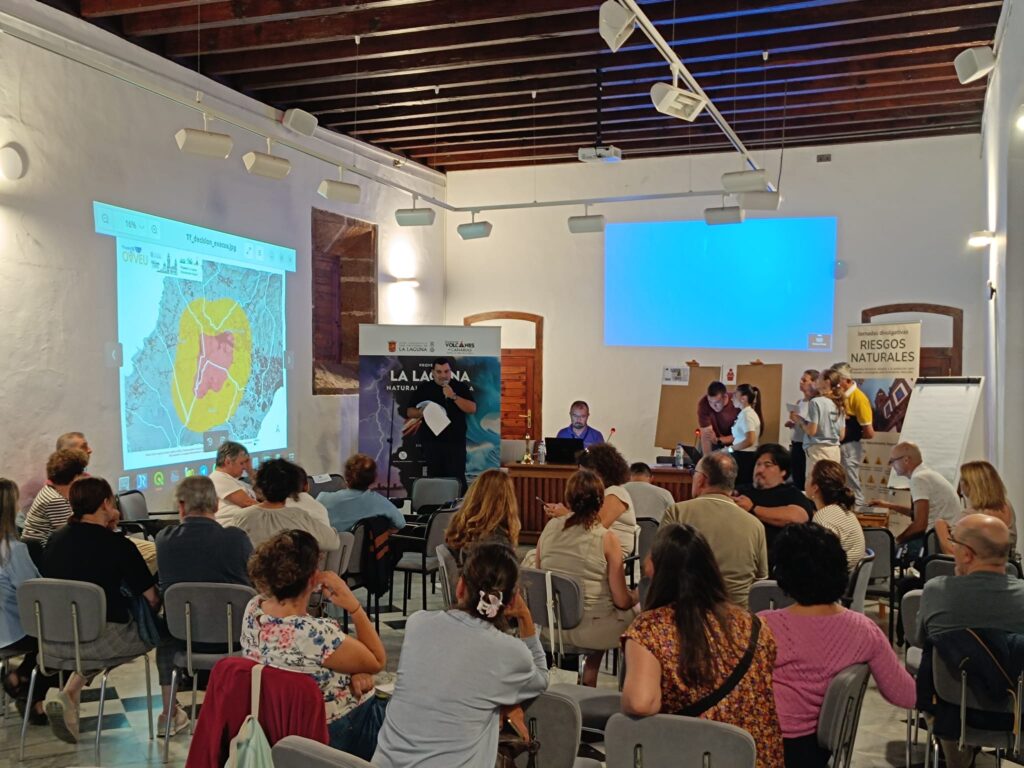How can we honour those who are no longer present? How do we create a space that engages with history without becoming ensnared in it? This was the challenging task that faced the City of Adeje when it began the revitalisation of the tower and its surroundings, located in the heart of the Plaza de España. The outcome: a space where art coexists with the remnants of the town’s original inhabitants, where light and stone serve as a guiding force.
The Adeje tower stands prominently over the historical centre of the municipality and, at the same time, is entrenched in its past. It measures 24 metres, plus an additional 1.5 metres for the bell tower. Its structure ascends into the historical centre with the same significance as it descends into the subterranean levels.
The local government rejuvenated this area in 2010, which rests atop what was once a municipal ossuary. There lie the remains of individuals who lived prior to the nineteenth century—nameless people, often absent from history books, who farmed the land and shaped the municipality long before the tourism boom spurred the economic growth of this southern town.
Adeje’s mayor, José Miguel Rodríguez Fraga, emphasises the deep historical connection of the town with the Marquises and underlines his intention to establish a space—a location where the Holy Week proclamation was recently held—dedicated to remembering the ancestors, possibly with a memorial or a permanent chapel.
A reflection on funeral practices
The history of this site is intricately tied to the evolution of funeral traditions. Until the early nineteenth century, the deceased were interred around the parish of Santa Úrsula. However, a law enacted on November 6, 1813, banned burials within populated areas, obliging municipalities to construct cemeteries outside urban centres.
In Adeje, this directive faced challenges. The available land belonged to the estate of the strong house, necessitating negotiations with the Marquises. By 1837, the cemetery work was completed in the current area of Calvary. By then, a century’s worth of human remains had already been amassed.
The architectural intervention within Plaza de España and its adjoining spaces, designed by Fernando Martín Memph, began in 2009 and was concluded after a year of construction, aiming to redefine the historical core of Adeje.
The area beneath the square was initially envisioned to be transformed into a sacred museum. It is now known as the History and Art Space, located within the ravine. Its construction utilised reinforced concrete and black basaltic stone for the pavement.
Within this space, there is a three-storey pathway, one of which features a shallow sheet of water measuring just ten centimetres, contributing to a sense of depth. Light, shadow, and materials combine to create an atmosphere of reverence.
Fraga asserts that it is a place that possesses “telluric mysticism and profound attachment,” a space that “compels one to look back” to the ancestors, fostering an understanding of the town’s origins.
“Our intention with this tower and the internal space was to honour the memory of our ancestors. It serves as a commemoration for those who passed through this town,” he explains. This statement underscores a significant notion: history resides not only in documents but also in the subsoil and in how a community chooses to remember those who once inhabited it.
The Adeje tower is a symbol that ascends towards the heavens while also descending into the depths, reflecting what remains hidden from view: death. It is an acknowledgment of those who cultivated the earth and facilitated the existence and continuity of this town.














